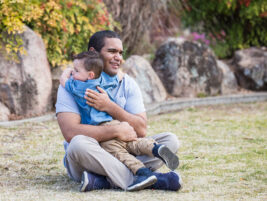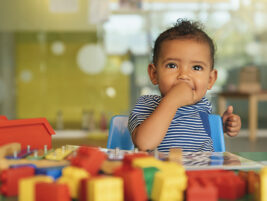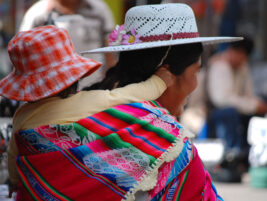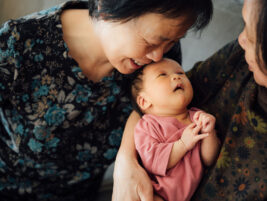The COVID-19 Pandemic experienced around the world has impacted young children and families significantly and even more so for those living in poverty with fewer financial and other resources and support. Unfortunately, the COVID Pandemic had an effect on children’s development and socialization due to limiting in person opportunities for children and families. Studies following families and children consistently found that the COVID pandemic disrupted access to child-care, limited socialization opportunities for children and families, and increased feelings of stress, anxiety, and other mental health outcomes (Alit et al, 2021 Bullinger, et al, 2021 Del Boca, et al, 2023). Bellandi, D, 2022; Briggs-Gowan et al, 2019; Eagan, et al, 2021). The text that follows provides a section of a full chapter that was reported in Osofsky et al (2024), focusing here on the significant secondary impact of the pandemic that occurred in large part due to the way in which the restrictions that were put in place undermined the core developmental need of young children for relationships, and the way in which such relationships are a central part of their recovery in the post pandemic period.
The Impact of the COVID-19 Pandemic on Infants, Young Children, and Families
In order to thrive, infants and young children need predictability, consistent schedules, and dependable and emotionally available parents and caregivers who can take sensitive care of them that includes listening to them, playing with them, and planning experiences they can count on and expect. The COVID pandemic changed many of these expectations as children and families were living with “indefinite uncertainty” about when the pandemic would end and their lives would return to normal. First, they had to adjust to the “stay at home” orders so that they could not participate in the usual activities of going to childcare centers, preschools, or schools. For parents who were essential workers, there were many worries about childcare and also stress related to concerns about losing their jobs. For others who could work virtually, balancing providing both childcare and/or virtual schooling for their children was challenging. While advice to practice social distancing was designed to help protect children and families from COVID, it also meant that young children were not able to visit their friends, go out to play, or see their grandparents and other close relatives who meant a lot to them. From a mental health perspective, it would have been more advisable to require physical distancing for safety and encourage virtual social contact with friends or family using technology if possible. If families did not have access to video technology, and many throughout the world did not, telephone contact could be encouraged as a way to stay in touch and to visit friends and family. It would have been important during this time of isolation that a “new normal” be created to find ways to help families keep up with close relationships that are so important for young children (Lyons-Ruth et al., 2017). Virtual contact is also important for parents and caregivers for support to help them be able to provide better care for their children. At the same time as lockdowns were required, for the first time in many countries, wearing face masks for protection was recommended or required in many settings when around other people. For many children and families, masking was uncomfortable, different, and also interfered with them trying to feel “normal.”
Longer term outcomes and ways to Support Resilience in Young Children Following the COVID-19 Pandemic
Infants, young children, and families around the world have experienced much adversity during the COVID-19 pandemic due to the indefinite uncertainty. Masten (2015) and Osofsky (2024) emphasized that some young children, especially with support from parents and caregivers, can adapt and recover showing resilience, while others have a more difficult time. Response and recovery depend upon different factors including the extent of the impact on the young child and family and especially the support provided by family and others.
Resilience in young children depends upon caring, engaged and nurturing family members, close relationships with emotional security and a sense of belonging, planning and problem solving, family flexibility, ability to self-regulate including emotions, hope and optimism, coherence and understanding of what is happening, routines and rituals. Engagement in school is also important for children who are a little older, as are well-functioning communities that provide support, promotion and protection for children and families.
One of the factors that made it more difficult for young children to show resilience during the pandemic related to the significant impact on parents and families, especially those with fewer resources. The components leading to increased self-efficacy and resilience with a supportive infrastructure at the community level were generally not available during COVID. To support resilience for young children, it is crucial to provide support for parents and families during any disaster, including the COVID pandemic. Masten (2021) considers risks, assets, and adaptive systems in a multisystem perspective to support resilience. The following components are important to support resilience: 1) Caring family with sensitive caregiving (nurturing family members); 2) Close relationships; 3) Emotional security, belonging (family cohesion, belonging); 4) Skilled parenting (skilled family management); 5) Skilled parenting (skilled family management); 6) Agency, motivation to adapt (active coping, mastery); 7) Problem-solving skills, planning, executive function skills (collaborative problem-solving, family flexibility); 8) Self-regulation skills, emotion regulation (co-regulation, balancing family needs); 9) Self-efficacy, positive view of the self or identity (positive views of family and family identity); 10) Hope, faith, optimism (hope, faith, optimism, positive family outlook); 11) Meaning-making, belief life has meaning (coherence, family purpose, collective meaning-making); 12) Routines and rituals (family routines and rituals, family role organization); 13) Engagement in a well-functioning school; and (14) Connections with well-functioning communities.
To support resilience, what is most important is a consistent emotionally available caregiver to listen to and be with the young child. It is crucial that the needs of young children and families become an important component of disaster planning in order to support resilience. COVID-19 had characteristics of a disaster and therefore recovery includes a community approach involving schools, parents, and caregivers (who themselves may be traumatized), community providers, spiritual leaders, and other supportive groups. The focus needs to be placed not only on the expectable and developmentally related regressive symptoms and behavioral dysregulation in young children, but also on those factors that will build resilience and inevitably will support recovery. Interventions should focus on efforts that will be universally helpful, those that should be targeted for young children with specific reactions, and those that are useful for children with pre-existing and long-term difficulties. It is important to include a community participatory approach in the establishment of supportive services. Respect needs to be given to the strengths and cultures of the impacted communities. To support resilience, more attention should be given to individual and community resilience as well as an effective response to support recovery across systems.
About this paper
A full version of this paper can be found in Osofsky, J. D., Fitzgerald, H. E., Keren, M., & Puura, K. (2024). Handbook of Infant Mental Health (4th). Chapter 23: Osofsky, Joy & Osofsky, Howard. The Importance of Relationships to Help Young Children, Parents, and Caregivers Impacted by the COVID Pandemic. 10.1007/978-3-031-48631-9_23.
Authors
Joy D. Osofsky, Ph.D.
United States
Howard J. Osofsky, M.D., Ph.D.
United States








